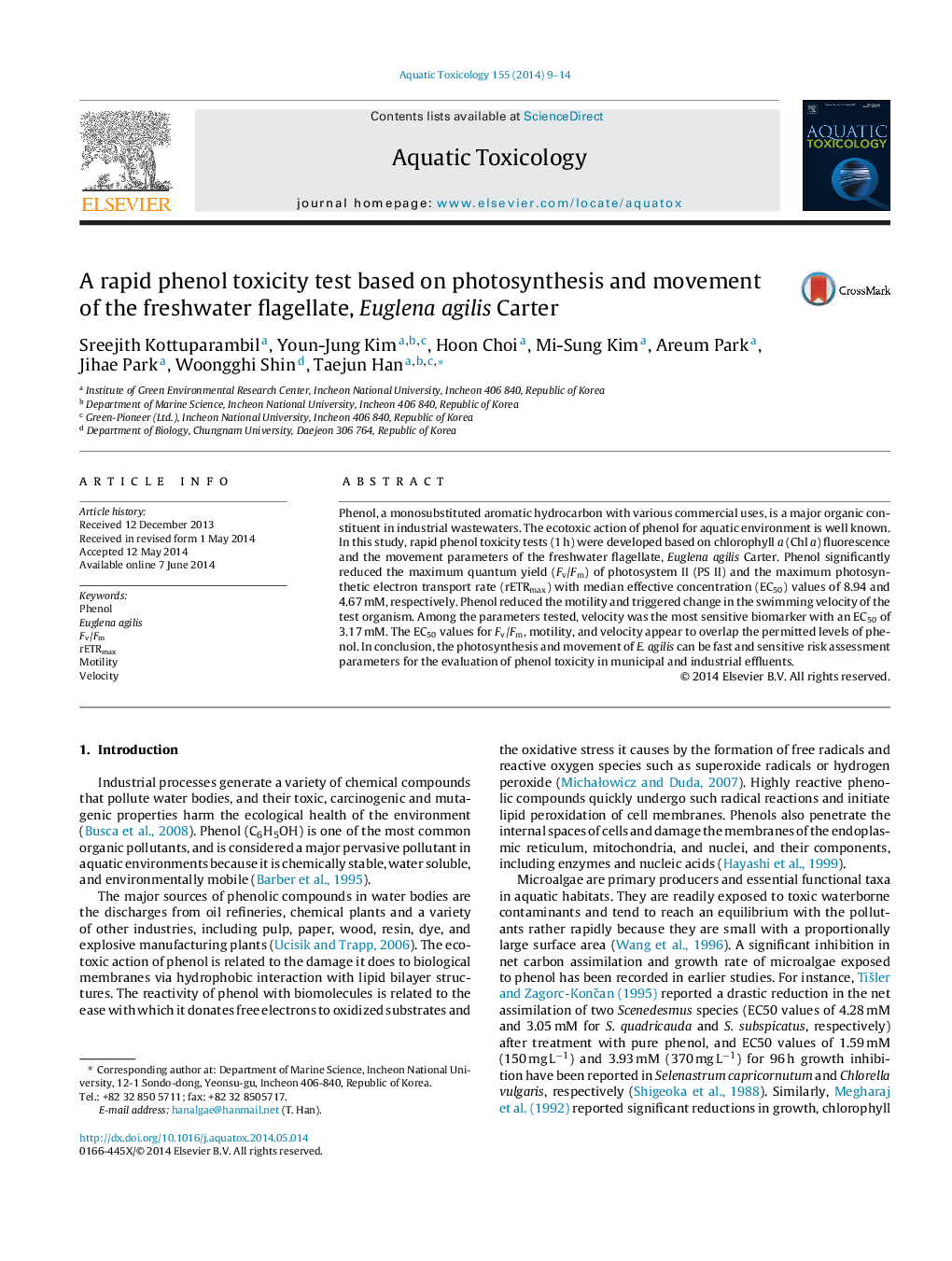| Article ID | Journal | Published Year | Pages | File Type |
|---|---|---|---|---|
| 4529153 | Aquatic Toxicology | 2014 | 6 Pages |
•Rapid phenol toxicity tests (1 h) were developed based on Chl a fluorescence and the movement parameters of Euglena agilis.•Phenol significantly reduced Fv/Fm of PS II and rETRmax with EC50 values of 8.94 and 4.67 mM, respectively.•Among the movement parameters tested, velocity was the most sensitive biomarker with an EC50 of 3.17 mM.•The EC50 values for Fv/Fm, motility, and velocity appear to overlap the environmental permissible levels of phenol.
Phenol, a monosubstituted aromatic hydrocarbon with various commercial uses, is a major organic constituent in industrial wastewaters. The ecotoxic action of phenol for aquatic environment is well known. In this study, rapid phenol toxicity tests (1 h) were developed based on chlorophyll a (Chl a) fluorescence and the movement parameters of the freshwater flagellate, Euglena agilis Carter. Phenol significantly reduced the maximum quantum yield (Fv/Fm) of photosystem II (PS II) and the maximum photosynthetic electron transport rate (rETRmax) with median effective concentration (EC50) values of 8.94 and 4.67 mM, respectively. Phenol reduced the motility and triggered change in the swimming velocity of the test organism. Among the parameters tested, velocity was the most sensitive biomarker with an EC50 of 3.17 mM. The EC50 values for Fv/Fm, motility, and velocity appear to overlap the permitted levels of phenol. In conclusion, the photosynthesis and movement of E. agilis can be fast and sensitive risk assessment parameters for the evaluation of phenol toxicity in municipal and industrial effluents.
